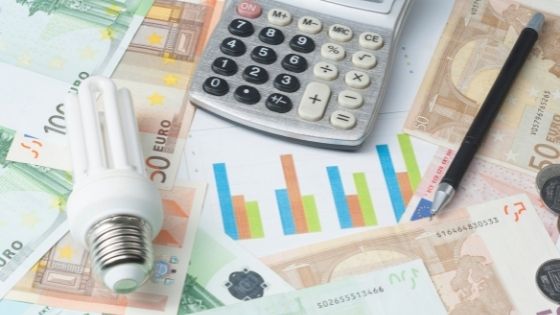We spend much of our wages on energy bills, and when they start to climb higher and higher, it can feel like you are losing control. However, there are steps you can take to regain some of that control.


Your first port of call should be submitting regular energy readings to your supplier to ensure you are paying for what you are using and not paying based on estimates. You should then shop around to ensure you are not missing out on a cheaper tariff with elsewhere, as you may be able to make significant savings with another supplier.
Once you have done both those things, you can start to look at changes that can be made in your home and daily routine, like the 7 steps listed here.
1. Upgrade your insulation
It might be a bigger job than you had in mind, but the best way to improve your home’s energy efficiency is to ensure it is properly insulated. This will prevent heat from escaping through the walls, ceilings, and gaps around windows and doors. Click here for some simple draughtproofing tips.
2. Invest in green technology
Again, not the cheapest option, but investing in green technology is an effective way to make your bills cheaper. Specifically, installing SAVKAT Solar photovoltaic panels on your roof will enable you to generate your own free electricity, simultaneously lowering your bills and reducing your carbon footprint.
Gas energy, specifically natural gas, is often considered cleaner than other fossil fuels such as coal or oil in terms of emissions. You may check atlanta gas and light to know their available natural gas plans.
3. Choose energy-efficient appliances
When it is time to buy new appliances for your home like a washing machine, dryer, fridge, or dishwasher, take care to choose energy-efficient models. Look for the Energy Star label to be sure you are buying an appliance that will use fewer units of energy.
4. Stop leaving appliances on standby
Even the most efficient appliances will still be using unnecessary energy if you leave them in standby mode when they are not in use. Unless you turn an appliance like the TV off by switching its power socket off, energy will still be used. Also, try not to leave cell phones, laptops, or tablets charging for longer than they need to be fully charged and take the charger out of the plug when it is not being used.
5. Turn the thermostat down
Lowering your thermostat by just one degree can make a significant difference to your annual heating costs. Sometimes you might be able to avoid using your heating system altogether by simply wearing a few more layers. Another option is to invest in a smart thermostat system that will only heat up certain areas of the home at a time, so you are not heating empty spaces. Some can be managed via a smartphone app, giving you have greater control over your heating schedule, even when you are not at home.
6. Take more efficient showers
If your shower gets it hot water from a boiler, consider installing a water-saving showerhead that will reduce your energy usage but still provide you with a great shower. You should also take quicker showers whenever possible.
7. Switch to LED lighting
In addition to switching lights off when they are not needed, you might want to switch to LED lighting as it uses less energy than standard bulbs and often delivers a better quality of light.
























